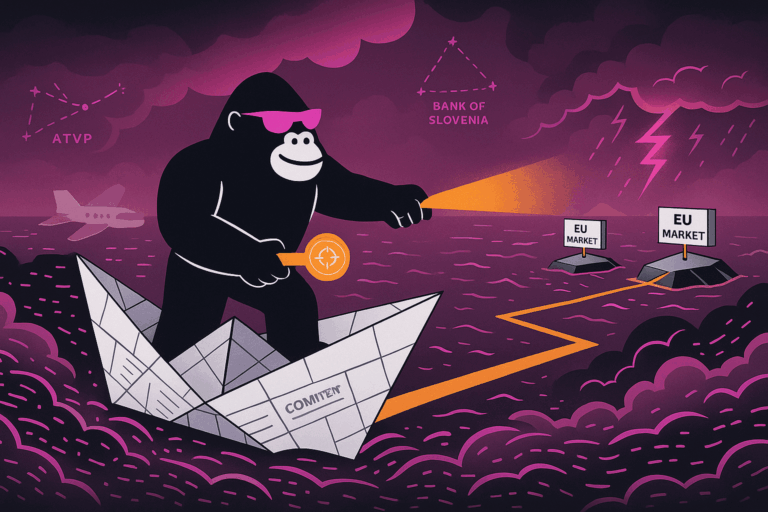I still remember when crypto regulation felt like chasing a moving target. Now, the Markets in Crypto-Assets Regulation (MiCA) finally brings clarity—and a fair share of paperwork—to the EU. In Germany, MiCA’s provisions landed via the Finanzmarktadaptionsgesetz (FinMADiG), and BaFin is your go-to authority.
In this article, I’ll walk you through key dates, transition rules, licensing steps, and practical tips to help your crypto venture lock in compliance and passport seamlessly across Europe.
Overview of MiCA and its transposition in Germany
Let’s unpack why MiCA matters. MiCA (Regulation (EU) 2023/1114) creates a single rulebook for crypto-assets not covered by existing securities laws. On 30 June 2024, asset-referenced tokens (ARTs) and e-money tokens (EMTs) fell under its scope EU-wide. By 30 December 2024, full governance and conduct rules for Crypto-Asset Service Providers (CASPs) kicked in.
Germany adopted these requirements through FinMADiG in mid-2024, making BaFin the sole licensing authority under MiCA Articles 60–62. FinMADiG adds national twists—like grandfathering and a fast-track route—so you can leverage existing licences instead of starting from scratch.
Key Milestones and Deadlines in Germany
| Date | Event |
| 30 June 2024 | ART/EMT provisions effective EU-wide |
| 1 July 2024 | BaFin begins accepting MiCA licence applications (fast-track for existing CASPs) |
| 30 December 2024 | Full MiCA CASP regime applies to new market entrants |
| 31 December 2025 | Deadline for grandfathered German CASPs to secure full MiCA authorisation |
Germany’s clear timeline means you can plan your application without guesswork.
PRO TIP
Reach out to BaFin right after 30 June to confirm if your token qualifies as an ART or EMT—early clarity prevents last-minute headaches.
Pre-MiCA and transition (“Grandfathering”) provisions
If you’ve held a BaFin CASP licence since January 2020 under the Fifth Anti-Money Laundering Directive, congrats: you’re grandfathered. Think of this as a fast-pass at a festival—it speeds up your MiCA transition.
But don’t linger: the fast-track window closes on 30 December 2024, and you must convert that grandfathered licence into full MiCA authorisation by 31 December 2025. Miss this cutoff, and you lose your EU passport—no Schengen visa for your crypto services.
The European Securities and Markets Authority (ESMA) flagged mid-2025 that missing these deadlines could exclude you from Member States with even shorter windows (some as brief as six months).
PRO TIP
Perform a gap analysis before 1 July 2024, mapping your current licence scope against MiCA’s new requirements to ensure your fast-track application sails smoothly.
Licensing requirements and application process
Navigating BaFin’s authorisation process is like assembling a high-stakes puzzle: every piece—governance, finances, tech resilience—must fit perfectly.
Scope of authorisation
Under MiCA Article 62, any entity professionally offering one or more crypto-asset services needs a licence. This covers:
- Centralised exchanges and alternative trading systems
- Custodial wallet providers
- Brokers and order-execution services
- Transfer and payment services (crypto-fiat conversion)
- Portfolio management and advisory
- Issuance/redemption of ARTs and EMTs
Define each service line clearly in your application and outline how you plan to leverage EU passporting once authorised.
Core dossier components
Your BaFin dossier must demonstrate governance integrity, risk management, technical resilience, and financial solidity.
| Component | Key Elements |
| Program of Activities | Business model, services, client segments, cross-border strategy |
| Governance & Fit & Proper | Organisational chart; roles for board, compliance officer, risk manager; integrity attestations |
| AML/CFT & Travel Rule | Customer due-diligence, transaction monitoring, suspicious-activity reporting, aligning MiCA with German AML law |
| Technical Resilience | ICT architecture diagrams, cybersecurity controls, penetration-test reports, disaster-recovery plans |
| Capital Requirements | Own funds of €50 000–€150 000 (tiered by service), client-asset segregation, cold-wallet insurance |
| ART/EMT White Papers | Disclosures on token rights, governance, fees, redemption procedures, risk factors |
MiCA’s Travel Rule requires traceability of transfers—don’t treat it as a checkbox.
Timelines and service levels
BaFin will check your dossier for completeness within a short window, then aims to decide within 40 working days of a complete file. Fast-track reviews for grandfathered firms can shorten this timeline.
PRO TIP
Book a pre-application meeting to align on white-paper format and capital thresholds—BaFin can clarify whether your tier falls at €50 000 or €150 000, avoiding surprises.
What crypto firms in Germany need to know
Regulation isn’t just paperwork; it’s about embedding real substance. MiCA demands an onshore presence, so keep qualified management and a registered office in Germany. Think of this as your home base for EU passporting.
Your compliance framework must integrate MiCA’s stricter Travel Rule with Germany’s AML/CFT laws. Appoint a dedicated compliance officer, document conflict-of-interest policies, and maintain transparent decision logs. Budget for BaFin supervisory fees, own-funds thresholds, and insurance—cold-wallet cover isn’t optional.
On the bright side, a BaFin MiCA licence unlocks EU-wide passporting, letting you scale beyond Germany without extra licences. Keep tabs on ESMA’s upcoming Delegated Acts (Regulatory Technical Standards and Implementing Technical Standards) so you’re never caught off guard. Remember: BaFin enforces deadlines strictly—miss one, and you risk fines or licence withdrawal.
PRO TIP
Establish a quarterly compliance committee to review ESMA circulars and BaFin updates—this rhythm catches delegated standards updates before they become binding.
Practical next steps
Ready to dive in? Start with a gap analysis comparing your current controls against MiCA and FinMADiG. Then, assemble your dossier: draft your program of activities, governance manual, ICT schematics, AML/CFT procedures, financial projections, and ART/EMT white papers.
Next, schedule a pre-application consultation with BaFin to validate formats and avoid surprises. Train your teams on breach-notification protocols, passporting processes, and continuous monitoring. Finally, set up an alert system for real-time updates from ESMA, BaFin, and industry forums.
PRO TIP
Use project-management software to assign dossier tasks, set MiCA-aligned milestones, and flag overdue items—transparency reduces human error and keeps your timeline on track.
Streamline MiCA compliance with CyberUpgrade
Meeting MiCA’s rigorous requirements—from whitepaper filings to ongoing governance and transparency—often means endless manual tracking and audit prep. CyberUpgrade automates your MiCA workflows with prebuilt templates and real-time Slack or Teams prompts, keeping policies, risk assessments, and evidence audit-ready in one central hub.
Beyond MiCA, CyberUpgrade also supports DORA, ISO 27001, and NIS 2 frameworks, letting you “map once, prove many” across multiple regulations. Automated data extraction, vulnerability scans, and KPI dashboards feed each regulator’s portal seamlessly, reducing manual work by up to 80 %.
With fractional CISO services guiding your continuous monitoring and customizable compliance workflows, you’ll secure faster approvals, avoid fines, and adapt as MiCA and related frameworks evolve—turning compliance from a hurdle into a strategic advantage.
Beyond the horizon: Turning compliance into a strategic asset
Securing your BaFin MiCA licence is more than ticking boxes—it’s building credibility. By treating compliance as an ongoing strategic asset, you’ll not only meet today’s deadlines but also stay nimble for tomorrow’s regulations. Ready to transform MiCA compliance into your competitive edge? Reach out to CyberUpgrade, and let’s get your dossier in top shape.









